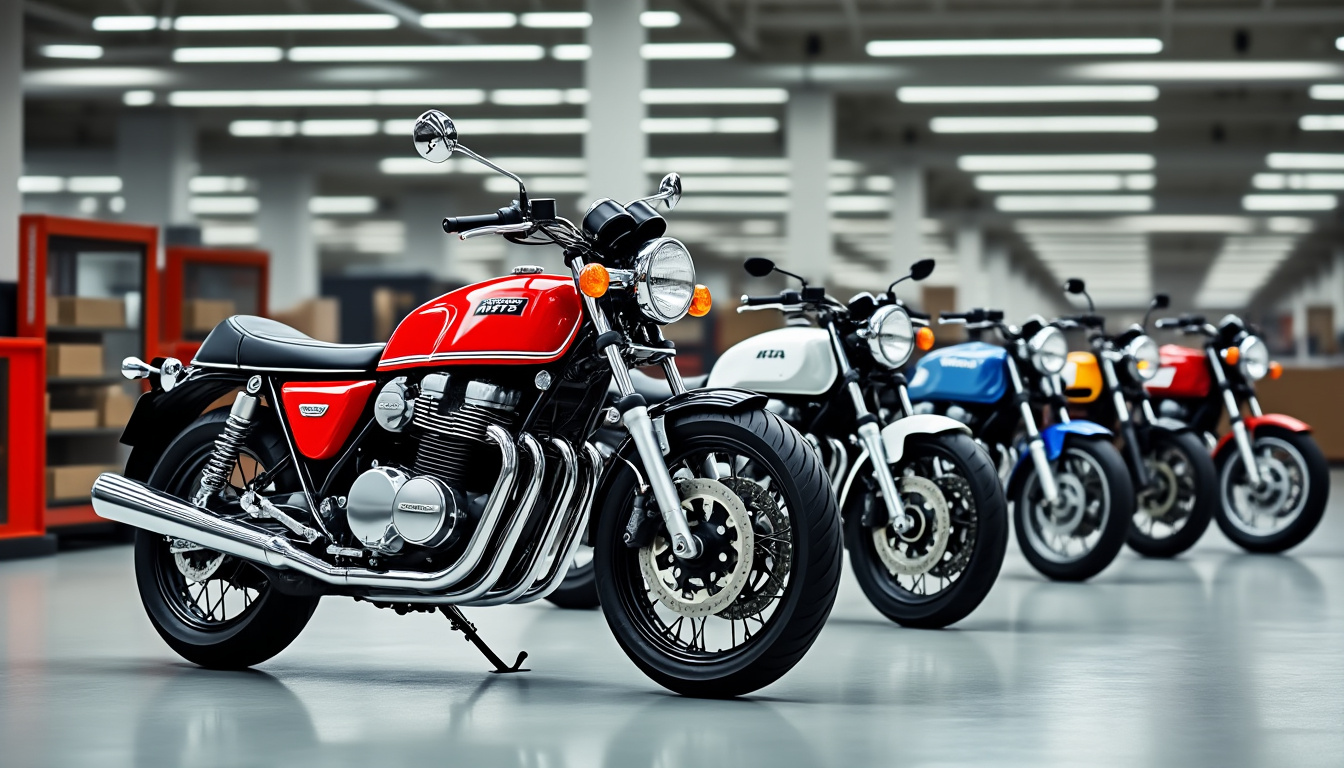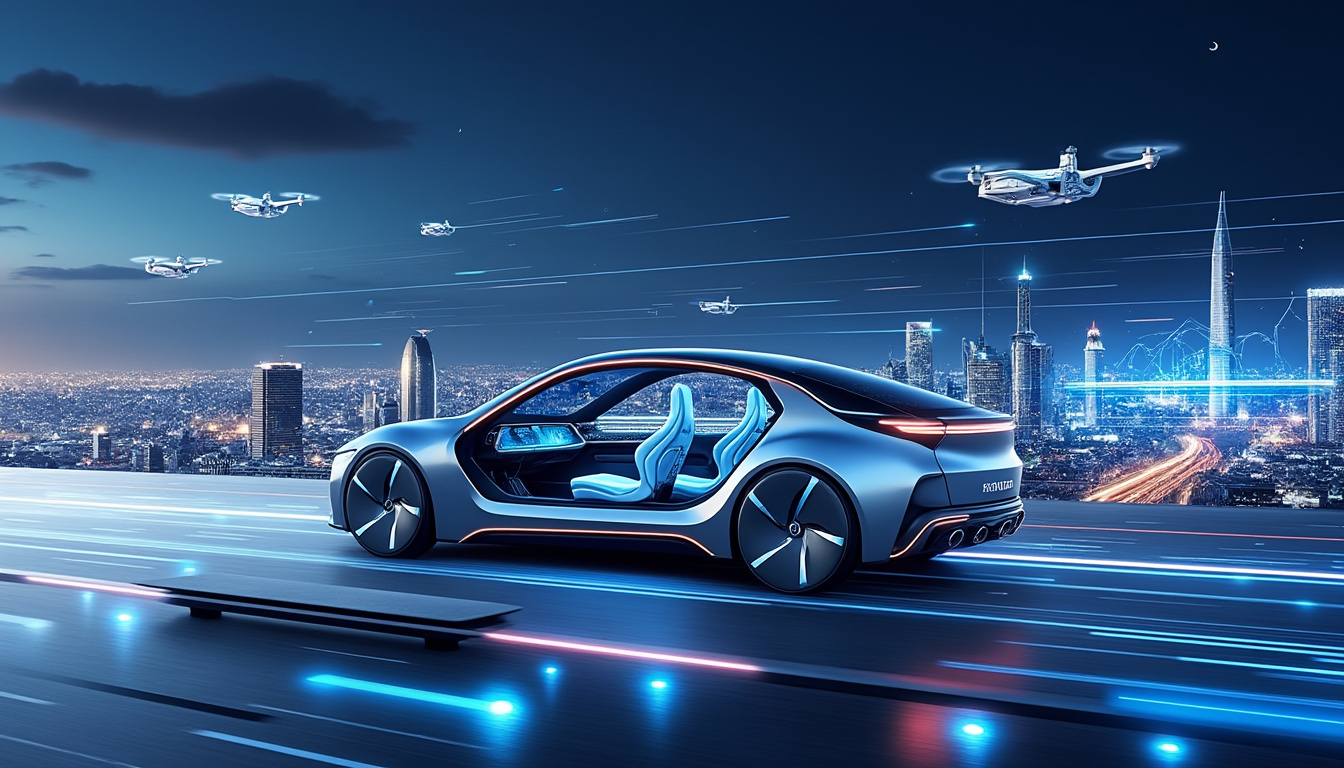Honda celebrates the production of 500 million motorcycles

Honda, one of the world leaders in the construction of motorized two-wheelers, makes a significant impact by surpassing the milestone of 500 million motorcycles produced. This impressive figure is not only a reflection of exponential technological evolution but also a testament to an unparalleled commercial success in the industry. With its first motorcycle rolling off the production lines in 1949, the Honda Dream Type D, the Japanese brand has continued to evolve and innovate. With its 37 factories spread across 23 countries, Honda has a production capacity that reaches 20 million two-wheelers per year, meeting the demands of markets worldwide.
Honda, an iconic manufacturer in the history of motorcycles
Since its establishment in 1948, Honda has succeeded in establishing itself in the motorcycle industry, becoming a symbol of reliability and innovation. The first model, the Honda Dream Type D, laid the foundations for a brand that would revolutionize the world of two-wheelers. The brand's rise in Japan quickly spread internationally, marked by the opening of its first production site in Belgium in 1963, a key step that enhanced its presence in Europe.
Honda has diversified its offering over the decades, adapting to the varied needs of consumers. The manufacturer offers models ranging from urban scooters to sport motorcycles. Among the most popular is the Gold Wing, an iconic touring motorcycle that also celebrates its 50th anniversary this year. The quest for innovation continues with plans for the development of electric motorcycles, demonstrating Honda's commitment to a sustainable future.
| Year | Number of motorcycles produced |
|---|---|
| 1949 | 1 |
| 1997 | 100 million |
| 2008 | 200 million |
| 2014 | 300 million |
| 2019 | 400 million |
| 2025 | 500 million |

The global expansion of Honda
The development of production sites has played a crucial role in Honda's rise. Each site, whether in Europe, Asia, or America, is designed to maximize production and respond effectively to local needs. Honda's geographic diversification allows for more agile production, a reduction in transportation costs, and a quick adaptation to trends in the local market.
By 2025, Honda is at the forefront with an annual production capacity of 20 million two-wheelers, enabling it to maintain its leading position in numerous markets, including France. Its success is attributed to unwavering customer trust in product quality and a renowned after-sales service. This momentum is essential for encouraging customer loyalty while holding a significant market share against competitors such as Yamaha, Suzuki, and Kawasaki.
The historic milestone of 500 million
Today, Honda proudly celebrates the production of its 500 millionth two-wheeler, a momentous occasion that reflects the brand's commitment to quality engineering. This Activa scooter, which rolled off the production lines in Vittalpur, India, is more than just a product; it embodies decades of technological progress and innovation. This symbolic figure would not have been reached without the continuous efforts of all Honda employees, whether in production, sales, or after-sales service.
The journey to this milestone has been marked by major innovations. Honda has adapted to market changes while addressing growing environmental concerns. The company has announced ambitious plans to produce 30 million motorcycles each year by 2030, with a goal of covering 50% of the international market. These projects illustrate the vision of a company that looks towards the future while respecting its heritage.
| Milestone | Year | Event |
|---|---|---|
| First motorcycle produced | 1949 | Honda Dream Type D |
| 100 million | 1997 | Goal achieved |
| 200 million | 2008 | Massive expansion |
| 300 million | 2014 | Venturing into new technologies |
| 400 million | 2019 | Launch of eco-friendly models |
| 500 million | 2025 | Celebration of the Activa in India |
Model evolution and ongoing innovation
In the realm of innovation, Honda excels in launching models that have redefined industry standards. The Honda Gold Wing, the Honda CB series, and more recent models like the Honda Hornet exemplify this bold vision. Each model has been designed to meet specific requirements, whether for track performance, comfort on long journeys, or urban use. In this context, it is crucial to remain attentive to customer expectations and anticipate future trends.
- Honda Gold Wing: the queen of touring motorcycles.
- Honda CB Series: a highly acclaimed series for its versatility.
- Honda Hornet: a model that combines sportiness and accessibility.
Meanwhile, Honda's ongoing success can also be attributed to its ability to diversify with innovative technologies, such as the development of hydrogen engines and other sustainable mobility solutions. Compared to other manufacturers like Ducati, Harley-Davidson, or BMW Motorrad, who also focus on innovation, Honda stands out for its flexibility and rapid adaptability.
Future challenges and Honda’s vision
As Honda celebrates this impressive milestone, the company must also face challenges. Competition is becoming increasingly fierce, not only from traditional brands like KTM, Piiaggio, Aprilia, but also from new entrants in the electric motorcycle sector. Honda must not only maintain its lead in innovation but also position itself as a key player in the transition towards greener transport solutions.
To tackle these challenges, Honda has launched a series of proactive initiatives. These include establishing new technical inspection standards for motorcycles, seeking more sustainable production methods, and developing an authentication ecosystem for racing motorcycles, aimed at ensuring the safety and traceability of the highest-performing models.
| Honda Initiatives | Description |
|---|---|
| Technical inspection | Rigorous checks to ensure vehicle compliance. |
| Sustainable production | Reduction of carbon footprint through process optimization. |
| Authentication ecosystem | Traceability system for performance motorcycles. |

As Honda looks to the future, it is clear that each model produced is the result of a heritage of passion and innovation. The Japanese brand continues to redefine industry standards for two-wheelers while preparing to meet the challenges of tomorrow. As Toshihiro Mibe, Honda's executive director, stated, "the motorized two-wheeler returns to the origin of our company, and we are committed to bringing joy to our customers everywhere in the world." This statement summarizes the spirit that has driven Honda to reach this historic milestone while projecting itself towards a promising future rich in innovation.
Source: www.lerepairedesmotards.com
Leave a Reply


Articles relatifs